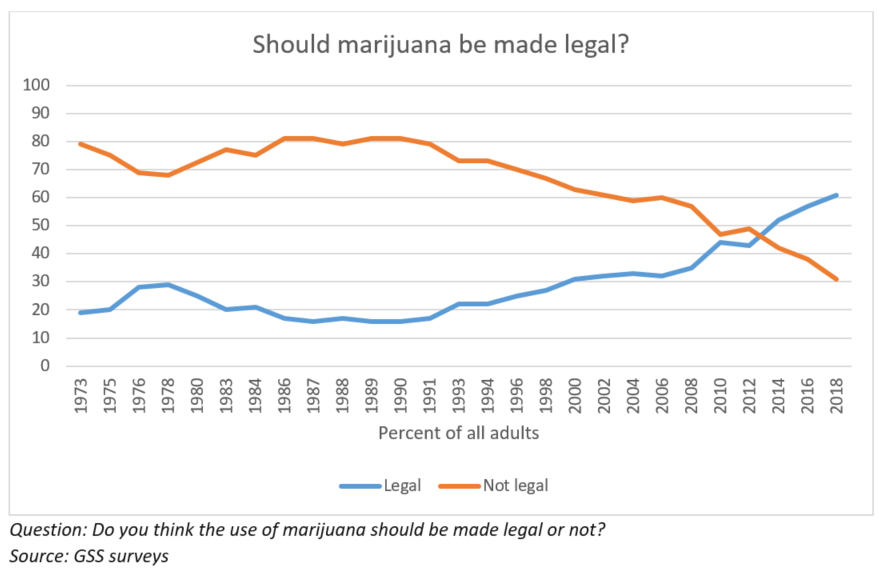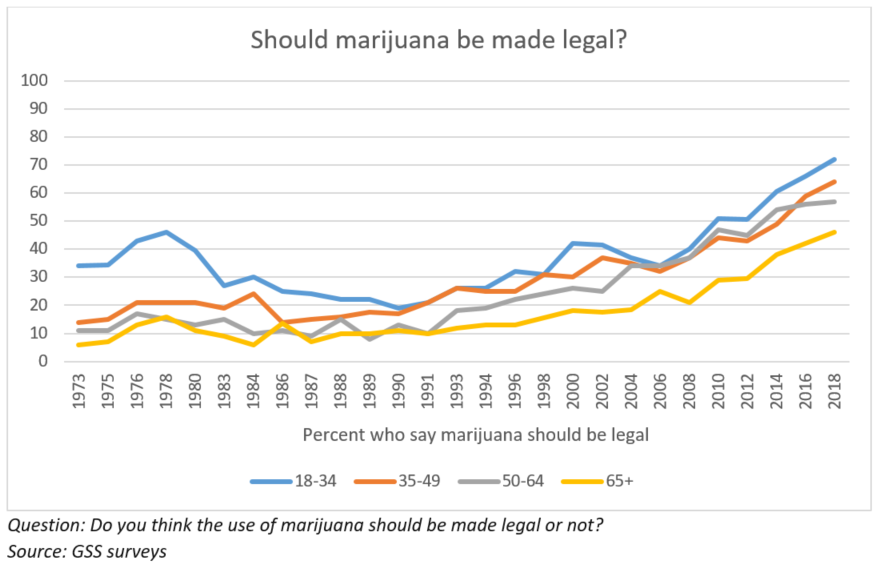
Americans’ support for legalized marijuana has been growing steadily over the years, mirroring changes in marijuana laws across the country. A collaborative analysis by The AP-NORC Center for Public Affairs Research and the GSS staff using the 2018 General Social Survey (GSS) shows that 61 percent say marijuana should be legal, up from 57 percent two years ago. Thirty-one percent say it should not be legal, compared with 38 percent in 2016.
Last November, Michigan became the 10th state to legalize marijuana for recreational use. And voters in Utah and Missouri approved the medical use of marijuana, which is now legal in 33 states.
The GSS has been asking Americans about the legalization of marijuana since 1973, when the public’s backing for legalization was 19 percent. As recently as 10 years ago, support stood only at 35 percent.

For the first time, most Republicans back legalizing marijuana, with 54 percent in favor, up from 45 percent in 2016. A majority of Democrats have favored legalization since 2014. In the current survey, 76 percent of Democrats endorse the legalization of marijuana, up from 65 percent in 2016.

Support has climbed among all age groups. While just 46 percent of Americans age 65 and older say marijuana should be legalized, it is up 4 points from 42 percent in 2016. A majority of younger Americans continue to support legal marijuana, particularly those age 18 to 34. Seventy-two percent of Americans age 18 to 34 endorse the legalization of marijuana, up from 66 percent in 2016.

The GSS is administered by NORC at the University of Chicago, primarily using in-person interviewing. The GSS started in 1972 and completed its 32th round in 2018. For the past 46 years, the GSS has been monitoring societal change and the growing complexity of American society. The GSS is the largest project funded by the Sociology Program of the National Science Foundation.
The typical sample size was 1,500 prior to 1994, but increased to 2,700-3,000 until 2008 and decreased to 2,000-2,500 for the most recent surveys. Resulting margins of error are between +/- 3.1 for the smaller sample sizes and +/- 2.2 percentage points for the larger sample sizes at the 95 percent confidence level. The GSS 1972-2018 Cumulative File was utilized to produce the statistics presented.



